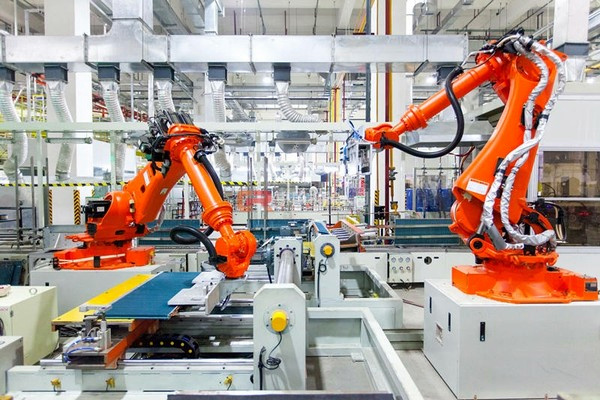Source: China Daily Date: 2016-11-18

Midea Group, a major home appliance manufacturer in China based in Guangzhou, has seen its human labor force greatly reduced at its Wuhan factory since the introduction of an intelligent production line.
"We have made intelligent production a strategic goal of the group," said Yang Hao, general manager of the company's Wuhan factory.
In 2015, Midea revamped its conventional production line into an intelligent one by installing more than 200 robotic devices. Now it has become one of the most advanced machine assembly lines in the world.
The average number of employees working alongside the production line has dropped from 160 to 51. Meanwhile, the qualification rate of products free of defects has increased from 97 percent to 99 percent.
"The biggest advantage of intelligent manufacturing is its accuracy," Yang said. "Humans make mistakes because they can get tired. But a machine does not doze off."
The number of workers at the Wuhan factory, which is the biggest manufacturing base of Midea in China, has gone down from 11,000 in 2011-with monthly production capacity of 500,000 units-to 4,300 with monthly production capacity of 630,000 units in 2015. In other words, its production capacity has increased by 26 percent while the number of workers has gone down by 39 percent during that period.
At the same time, the company said that the cost of intelligent production line is 22 percent lower than the conventional production line.
The company plans to invest 4 to 5 billion yuan ($582 million to $728 million) in the next four to five years to turn all of its factories into intelligent ones, Yang said.
"We need to take a very prudent approach. First build a demonstrative production line, then a workshop and eventually a factory," he added.
Air conditioners manufactured on intelligent production lines are expected to make up 30 percent of the company's total output in 2016. That share is planned to increase to 50 percent in 2017 and to more than 70 percent in ensuing years.
Meanwhile, Midea is making efforts to increase the percentage of local equipment used in its intelligent production lines.
"Imported equipment has high stability and accuracy but is five to 10 times more expensive than locally manufactured equipment," Yang said.
"We need to work with our local suppliers to help them develop equipment that can compete with those from other countries."